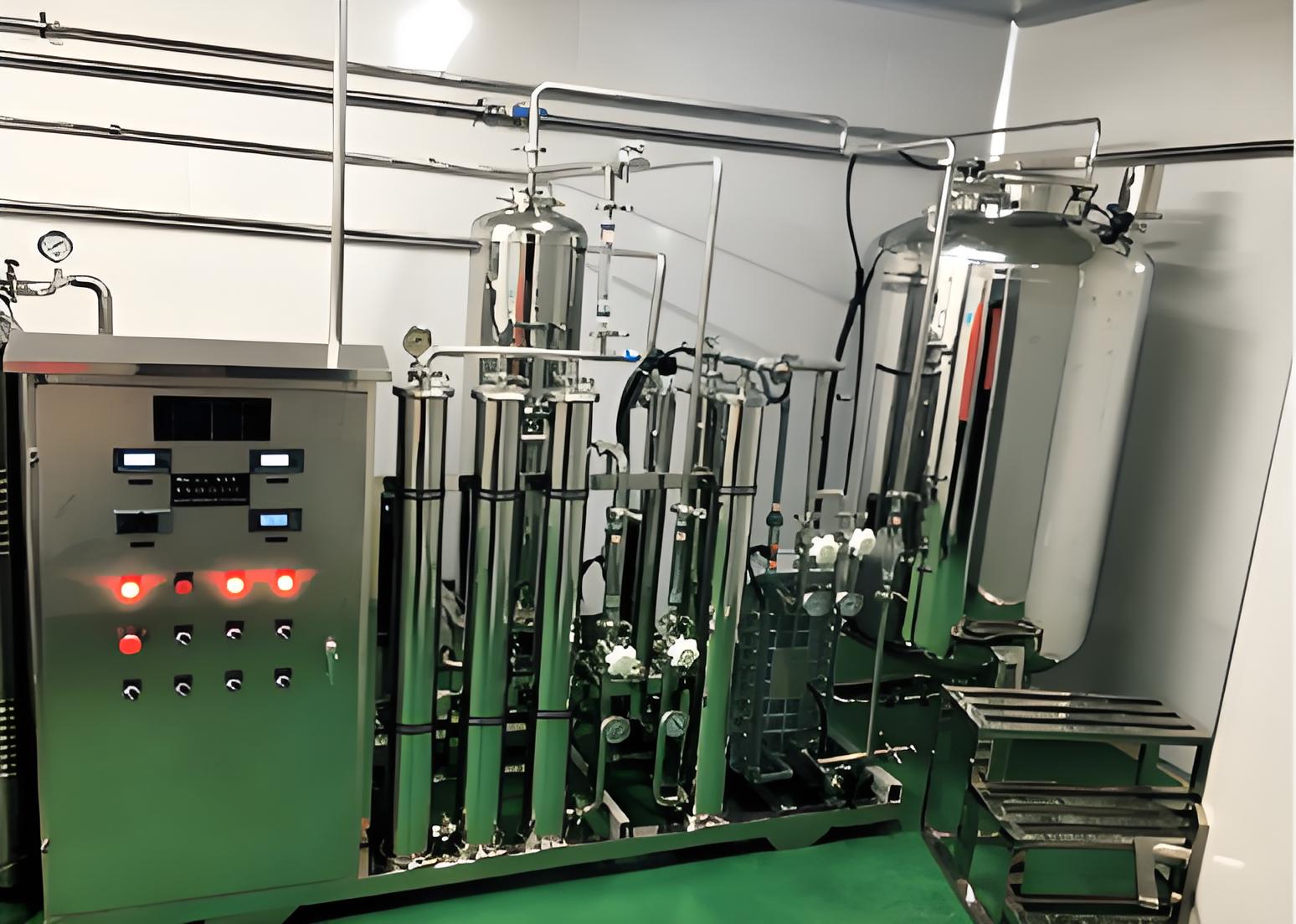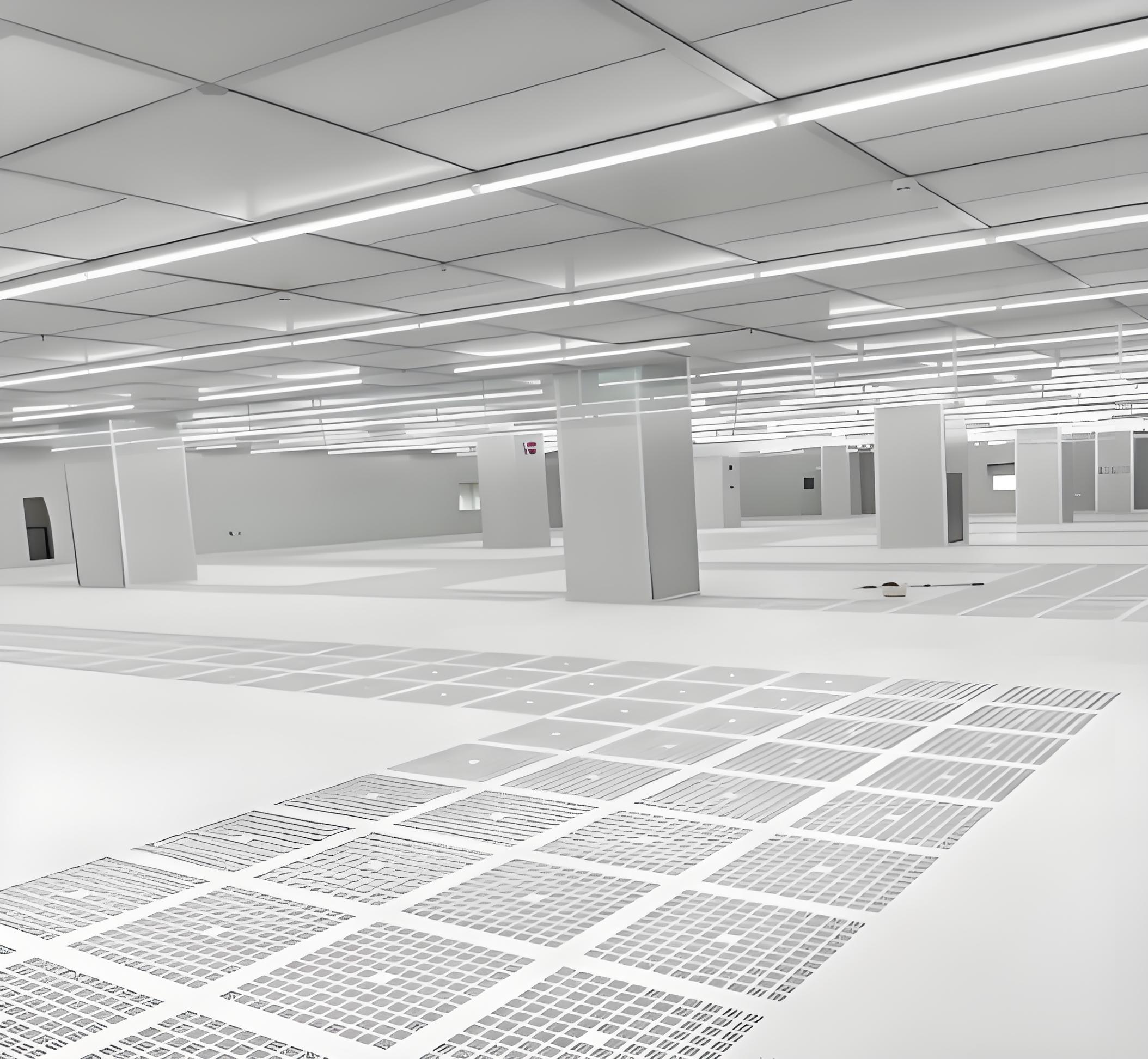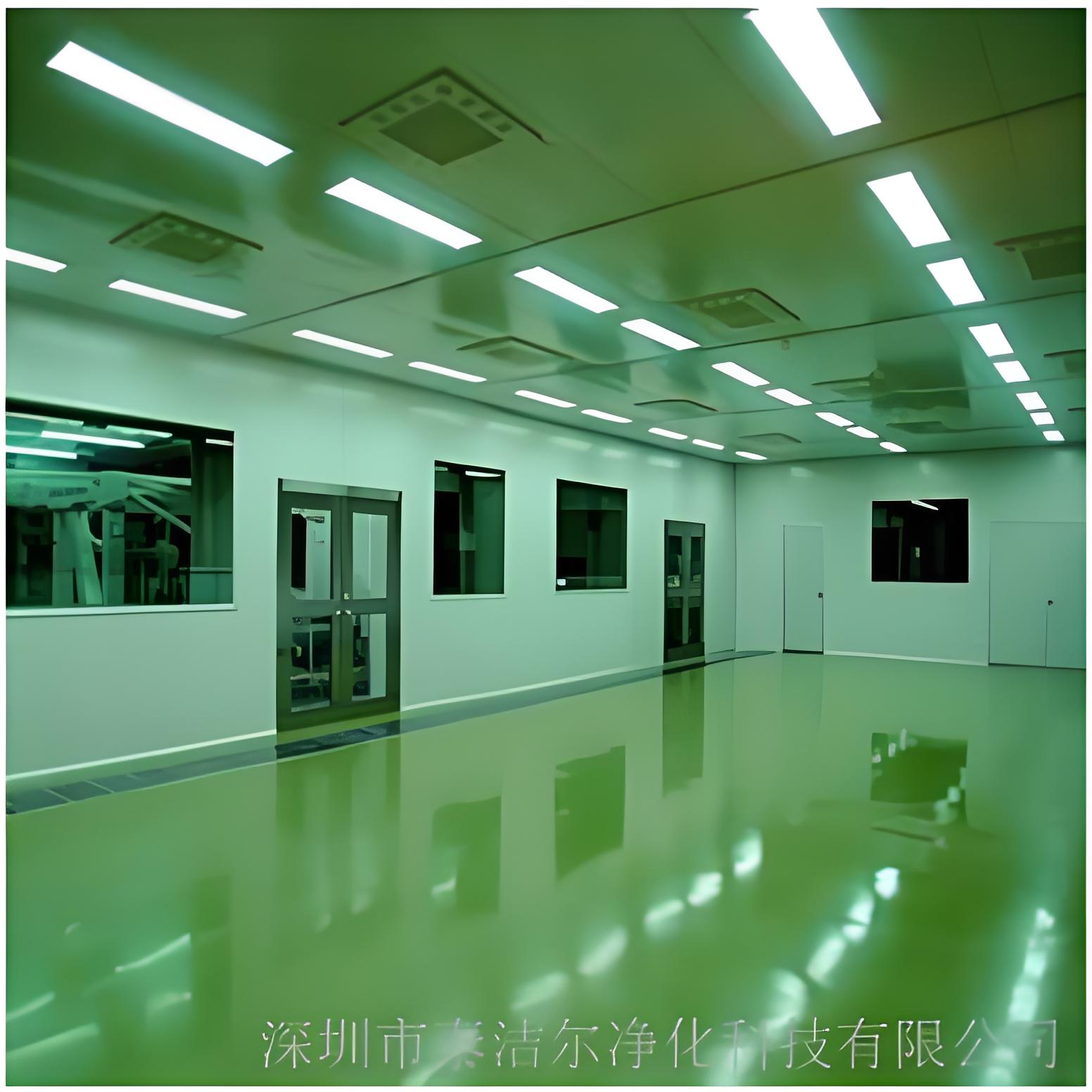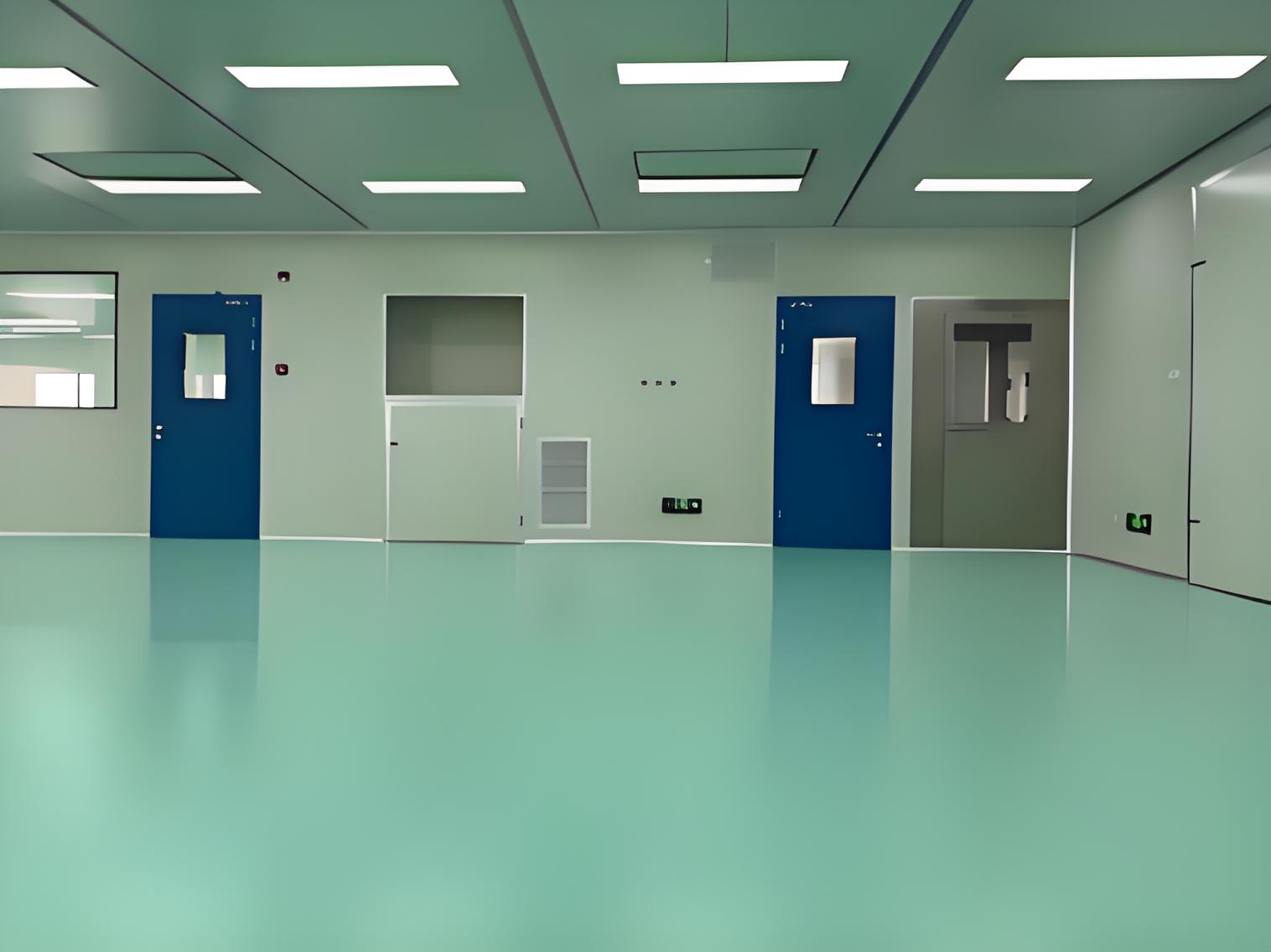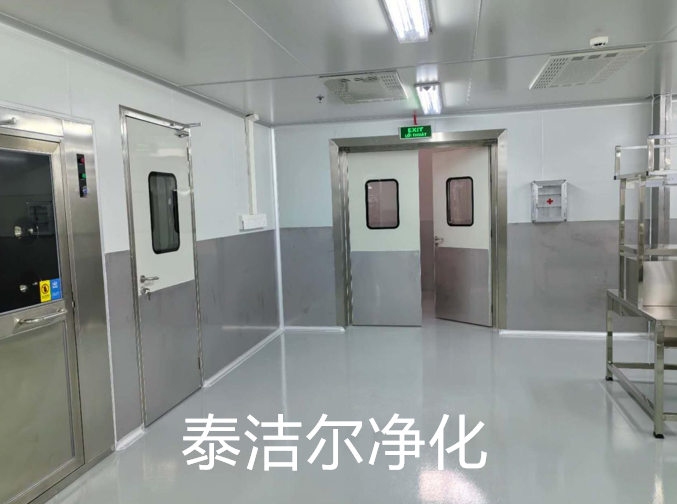
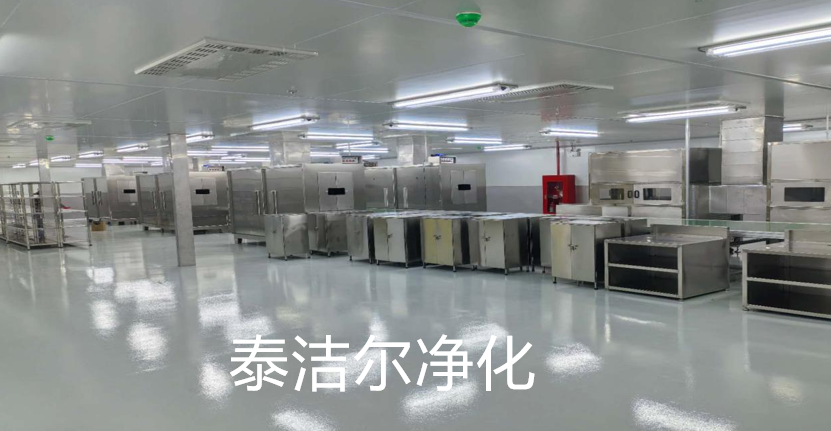
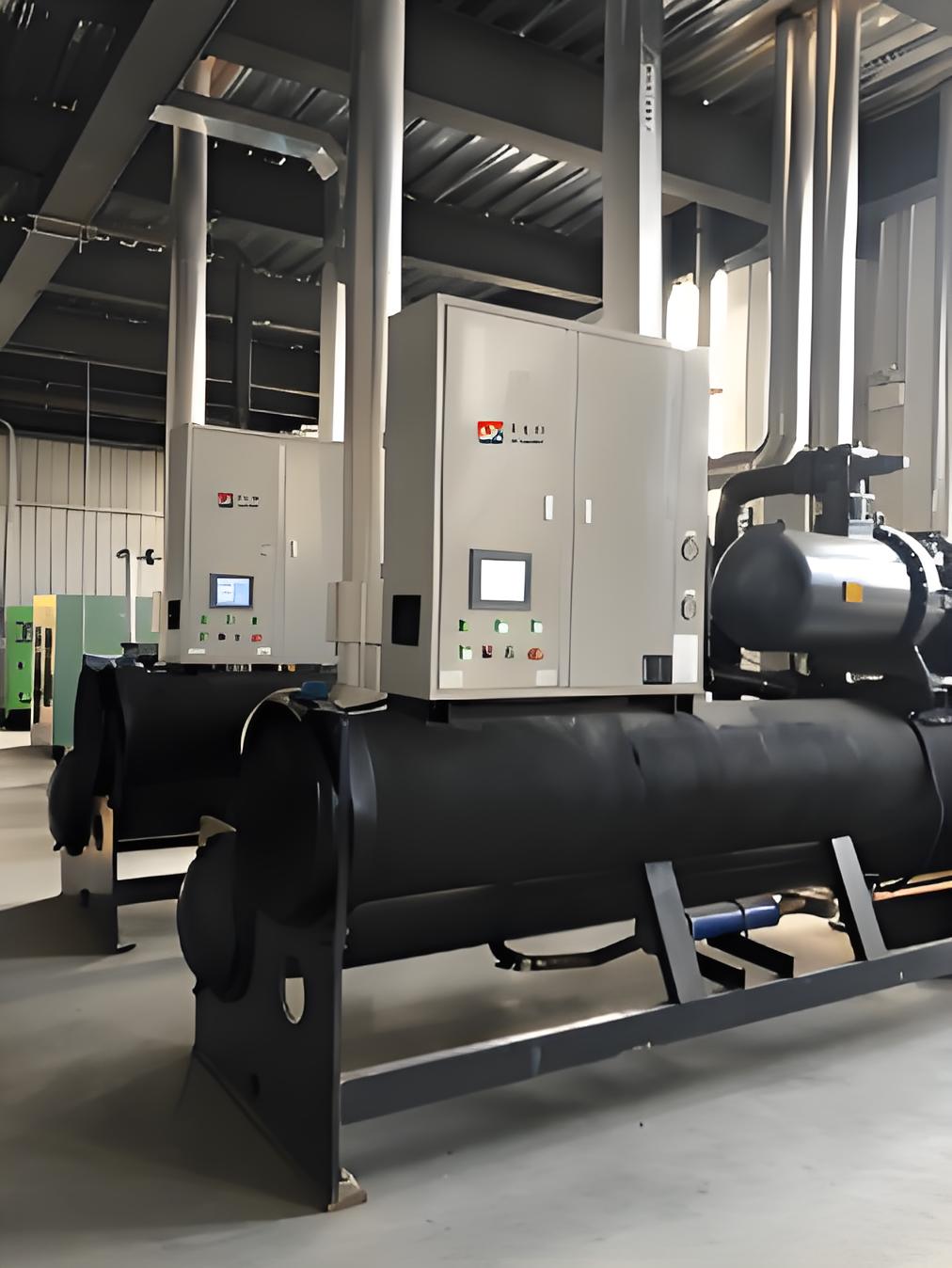
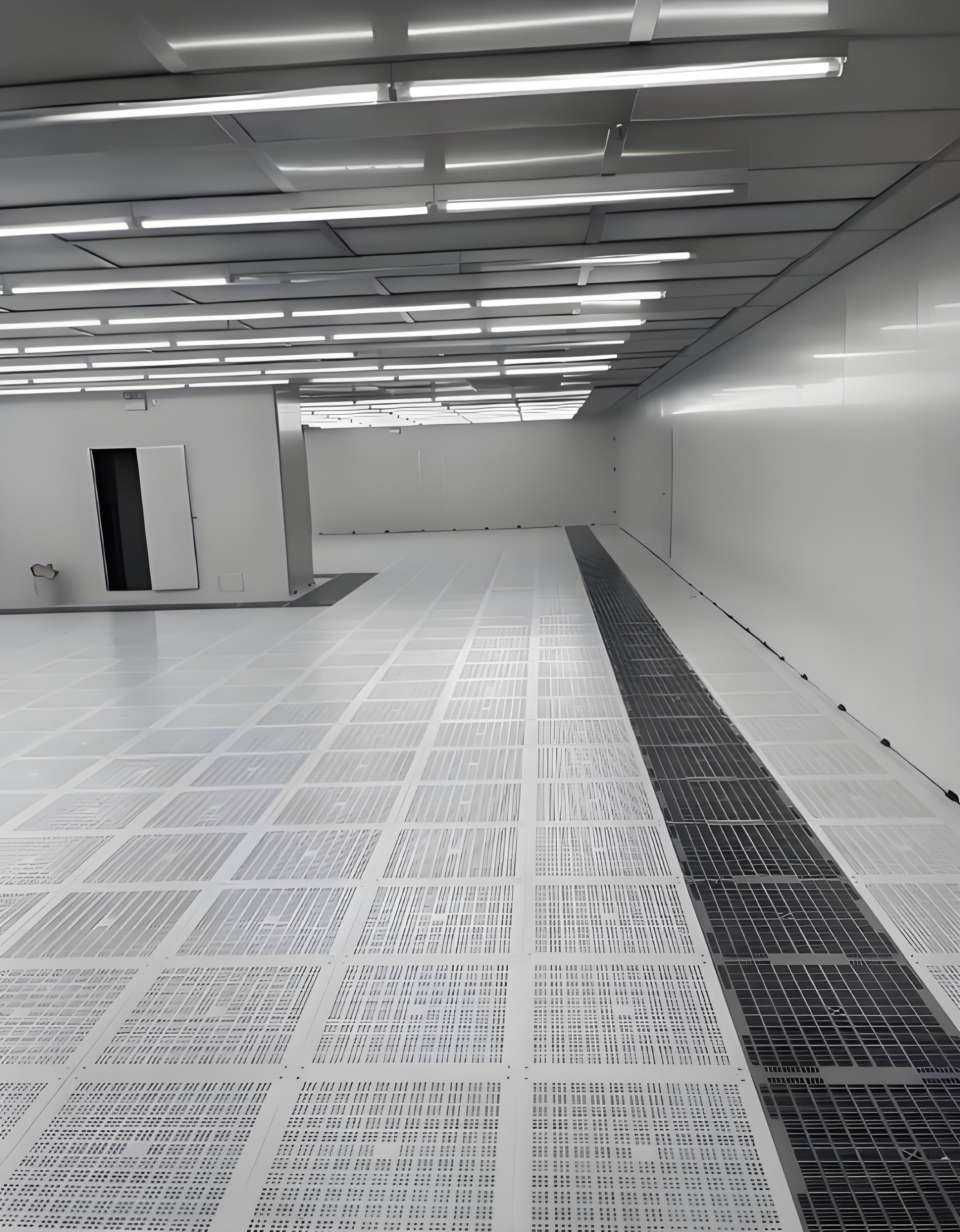

1. Turbulent Flow Cleanroom
Air from the AHU (Air Handling Unit) passes through ducts and HEPA filters into the cleanroom, then returns through side partitions or raised floors. The airflow is not linear but in a disordered or uneven swirling state. This type is suitable for cleanrooms with Class 1,000 to 100,000.
Advantages: Simple structure, low system construction cost, easy to expand the cleanroom. In some special areas, clean workbenches can be combined to enhance cleanliness.
Disadvantages: Micro-particles caused by turbulent flow linger in the space and are difficult to remove, easily contaminating products during production. Additionally, if the system stops and restarts, it often requires a long time to meet the required cleanliness standards.
2. Laminar Flow Cleanroom
In a laminar flow cleanroom, air moves uniformly in a straight line. Air enters the room through filters covering 100% of the surface area and returns via raised floors or side partitions. This type is suitable for environments requiring very high cleanliness, typically Class 1 to 100.
There are two types:
(1) Horizontal Laminar Flow: Air is blown unidirectionally from the filter and returned through the air return system on the opposite wall. Contaminants are pushed outward along the airflow direction, usually causing more severe contamination downstream. Advantages: Simple structure, quick stabilization after operation. Disadvantages: Higher construction cost than turbulent flow, difficult to expand room space.
(2) Vertical Laminar Flow: The entire ceiling is covered with ULPA filters. Air blows from top to bottom, achieving very high cleanliness. Contaminants generated during production or by personnel are quickly expelled without affecting other work areas. Advantages: Easy to manage, quick stabilization after startup, less affected by operational conditions or personnel. Disadvantages: High construction cost, limited flexibility in space usage, ceiling scaffolding occupies significant space, and filter maintenance is more complex.
3. Mixed-Type Cleanroom
The mixed type combines or simultaneously uses turbulent and laminar flow to provide localized ultra-clean air.
(1) Clean Tunnel: Uses HEPA or ULPA filters to fully cover the production or work area, upgrading cleanliness to Class 10 or higher, saving installation and operating costs. This type requires separating personnel work areas from product and equipment maintenance zones to avoid affecting work and quality during maintenance. Most ULSI (Ultra-Large-Scale Integration) production processes use this type.
Clean tunnels have two additional advantages: A. Easy and flexible expansion. B. Equipment maintenance can be easily performed in the maintenance area.
(2) Clean Tube: Encases and cleans automated production lines where products pass, upgrading cleanliness to Class 100 or higher. Since products are isolated from operators and dust-generating environments, even a small air supply can achieve good cleanliness, saving energy. Ideal for fully automated production lines. Used in Pharmaceuticals, Food, and Semiconductor industries.
(3) Modular Local Cleanroom (Clean Spot): Upgrades the cleanliness of production areas within Class 10,000~100,000 turbulent flow cleanrooms to Class 10~1000 or higher for production. Clean benches, clean booths, and clean hoods fall into this category.
4. Local Clean Technology
Clean Bench: Class 1~100.
Clean Booth: A small space enclosed by anti-static plastic curtains inside a turbulent flow cleanroom. It uses HEPA or ULPA filters and a separate AHU to create a higher-cleanliness space, achieving Class 10~1000, with a height of about 2.5m and coverage area under 10m². Wheels are added to the legs for flexible mobility.

